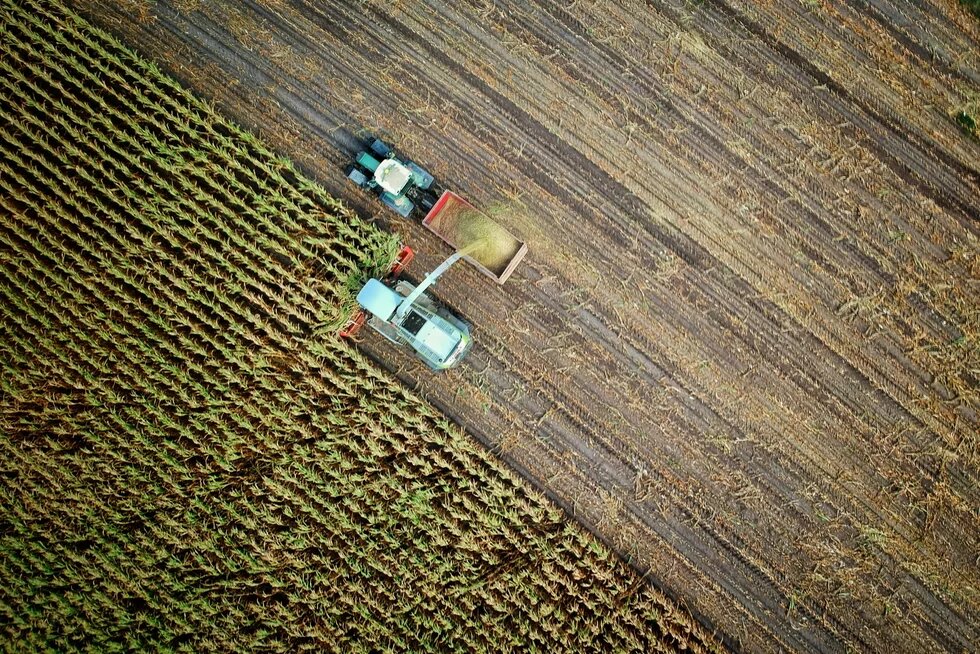Climate change, food security, and agricultural practices are intricately interconnected. The diverse array of stakeholders, including farmers, policymakers, and researchers, are working to address this multifaceted challenge by implementing strategies that minimize emissions, bolster climate change resilience and adaptation, and increase agricultural productivity. The development and adoption of “climate-smart agriculture” (CSA) practices have emerged as a comprehensive approach to achieve these three interrelated goals while carefully balancing synergies and trade-offs.

Climate change, food security, and agricultural practices are intricately interconnected. The diverse array of stakeholders, including farmers, policymakers, and researchers, are working to address this multifaceted challenge by implementing strategies that minimize emissions, bolster climate change resilience and adaptation, and increase agricultural productivity. The development and adoption of “climate-smart agriculture” (CSA) practices have emerged as a comprehensive approach to achieve these three interrelated goals while carefully balancing synergies and trade-offs.
As defined by the United Nations Food and Agriculture Organization (FAO), climate-smart agriculture (CSA) represents an agricultural approach designed to guide farmers’ decisions and actions, steering agri-food systems towards environmentally friendly and climate-resilient practices. Beyond the farming sector, CSA embraces an integrated approach to managing landscapes, encompassing cropland, livestock, forests, and fisheries, to address the interconnected challenges of food security and climate change. Consequently, climate-smart agriculture supports the achievement of internationally agreed-upon goals such as the Sustainable Development Goals (SDGs) and the Paris Agreement within the framework of the United Nations Framework Convention on Climate Change (UNFCCC). CSA strives to accomplish three primary objectives:
- To sustainably increase agricultural productivity and incomes;
- To strengthen and enhance resilience to climate change;
- To reduce greenhouse gas emissions associated with the agricultural sector, wherever feasible.
Climate-smart agriculture offers a nature-positive, climate-neutral approach for agricultural production by integrating best management practices through a context-specific lens of climate change mitigation and adaptation tailored to individual crops, regions, and ecosystems. This approach holds relevance for countries in both the Global South and Global North, although the challenges faced and prioritization of objectives may vary.
The development of climate-smart agriculture practices has its roots in addressing food security and securing agriculture incomes while alleviating climate change impacts related to the agricultural and land use sector. Climate-smart agriculture techniques offer an innovative approach to sustainable agriculture and food systems that bolster food security and nutrition, paving the way for the transformation of agricultural systems in the face of climate change. However, these practices are context-specific and must consider the multidimensional complexities of diverse climate conditions and agricultural systems. The adoption of CSA at any scale, from regional to individual farms, may be influenced by various factors, such as institutional arrangements, landscape governance, resource tenure, and economic, social, ecological, and climatic conditions. Consequently, climate-smart agriculture practices involve a range of stakeholders, including farmers, researchers, government officials, private sector representatives, and civil society actors. These stakeholders can drive innovation in transforming food systems, yet the factors enabling or hindering cooperation differ and are context-specific.
What are the Technologies behind Climate-Smart Agriculture?
Technological tools play a crucial role in advancing and implementing climate-smart agricultural practices. In many regions worldwide, however, there is limited knowledge about context-specific climate risks, suitable climate adaptation options, and alternative farming practices. To address this, farmers, producers, agricultural policy officers, and other relevant stakeholders at national and local levels require access to information and capacity-building programs. The climate impact maps available in the FAO repository can assist these actors in understanding and identifying context-specific risks to crops. Upon recognizing these risks, key players in the agricultural sector can leverage technical expertise and begin implementing measures such as conservation agriculture, intercropping, water management, tree and forest management, and alternative crop varieties. These interventions can enhance resilience and productivity while reducing emissions and promoting carbon sequestration in soil, ultimately benefiting production.
Financing Climate-Smart Agriculture
Another critical element for further uptake and scale-up of climate-smart agriculture is financial investments across the entire agricultural supply chain, particularly for countries, whose economies rely heavily on farming. Prioritizing public investments in that domain could help in incentivizing farmers to adopt climate-smart agriculture practices. In collaboration with the public sector, the private sector could also play a vital role in facilitating access to sustainability loans with favorable conditions for farmers.
The World Bank has already put forward CSA investment plans (CSAIP) addressing countries across Asia, Africa, and Latin America. These plans have helped relevant stakeholders across these regions to understand climate challenges associated with their respective food systems, explore potential solutions to these issues, and assess to what extent their agriculture sectors are climate-smart and resilient.
Examples for the Promotion of Climate-Smart Agriculture
Zambia
In Zambia, the World Bank partnered with the government and other stakeholders to develop a customized Climate-Smart Agriculture Investment Plan (CSAIP) aimed at fostering a productive, resilient, and low-emission agriculture sector while fulfilling the nation’s climate commitments. Zambia’s agricultural sector, a critical component of its rural economy, confronts multifaceted challenges and is likely to become increasingly vulnerable due to climate change. The Climate Smart Agriculture Investment Plan created for Zambia recommends emphasizing crop diversification, commercial horticulture, agroforestry, and infrastructure improvements to reduce post-harvest losses.
Bangladesh
In Bangladesh, the agricultural sector serves as the primary foundation for the nation’s food security and plays a crucial role in employment and poverty reduction. However, the rising demand for food (especially cereals such as rice) and the mounting pressure from significant losses of arable land due to climate change and urbanization trends place additional strain on the country’s agricultural sector. These factors indicate that Bangladesh must boost food production on a shrinking amount of arable land per capita in order to maintain self-sufficient agricultural output.
To tackle this dual challenge of poverty alleviation and reducing greenhouse gas emissions from the agricultural sector, the Climate Smart Agriculture Investment Plan has developed a comprehensive CSA strategy for Bangladesh. This initiative aims to promote sustainable practices that enhance the resilience and productivity of the country’s agricultural sector while mitigating its environmental impact.
Europe
Across Europe as well, numerous countries have experienced the devastating impact of climate change on agriculture and broader food systems. The European Commission’s strategy for achieving climate neutrality by 2050, encompassing the European Green Deal, and the Biodiversity and Farm to Fork strategies, aims to transition towards a more sustainable food system that delivers environmental, health, and social benefits while ensuring fair economic returns. Consequently, climate-smart agriculture practices have been implemented in several EU countries through various funding programs.
For example, the EU LIFE project SOLMACC established a network of 12 demonstration farms in Sweden, Germany, and Italy to investigate and showcase diverse climate-smart agricultural techniques. These farms focused on enhancing climate resilience and adopting environmentally friendly practices. Participating farmers experimented with on-farm nutrient recycling, crop rotations, reduced tillage, and agroforestry. Running from 2013 to 2018, the SOLMACC project’s scientific monitoring revealed that the 12 farms successfully reduced greenhouse gas emissions from agricultural activities and considerably improved their adaptability to climate change by implementing eco-friendly farming methods. Additional benefits, such as improved soil quality, increased biodiversity, and resource conservation, were also observed.
Moreover, the project demonstrated that these practices are economically viable for farmers, as the costs of implementation were generally lower and crop yields remained stable or even improved. Furthermore, climate-friendly practices supported the legitimacy of public spending through the Common Agricultural Policy (CAP) and helped maintain employment in rural areas, as organic farming practices tend to be more labor-intensive.
The INTERREG project Carbon Farming investigated financial and market incentives for farmers in the North Sea region, which included partners from the Netherlands, Belgium, Germany, and Norway, between 2018 and 2021. The project focused on implementing measures that simultaneously enhanced soil quality and sequestered CO2 from the atmosphere. By employing improved soil management and carbon farming practices, farmers can capture carbon from atmospheric CO2 and store it in their soil, thereby contributing positively to the European Union’s climate goals, emission reduction targets for 2030, and the objective of achieving climate neutrality by 2050.
Additionally, the project aimed to raise awareness of carbon farming’s potential among farmers and society as a whole, encouraging farmers to adopt more sustainable soil management practices by developing new business models for implementing carbon farming techniques. To address the existing knowledge gap in applying carbon farming practices, the project began by identifying the most promising measures. The findings from this study were documented in various reports, including an inventory of carbon sequestration techniques.
The final report delved into the collaboration between farmers and other stakeholders in order to valorize carbon farming practices and carbon sequestration. The most promising carbon farming measures and the devised business models were put into practice in “showcase” demonstrations, which were also documented in the report. These showcases served as real-world examples of how sustainable agriculture can benefit both the environment and farmers alike.
Can Climate-Smart Agriculture Boost Food Security and Foster Sustainability in the Agricultural Sector?
The growing severity of climate change is increasingly impacting agriculture and ecosystems worldwide. As the global population is projected to reach 9.8 billion by 2050, current food production systems face a monumental challenge. The agricultural sector must not only increase its output by a staggering 50% over the next 30 years to meet future food demands but also reduce its carbon footprint by half. Consequently, scaling up climate-smart agriculture (CSA) – an approach that enhances productivity, strengthens resilience to climate change, and curbs greenhouse gas emissions – is essential.
To fully harness the potential of CSA practices, it is crucial to broaden the evidence base surrounding their successes, failures, and lessons learned from implementation in various countries. Furthermore, when developing CSA plans, it is vital to consider the specific national and regional contexts. This includes assessing the economic and policy frameworks and emphasizing the importance of multi-stakeholder national science-policy dialogues.
Lastly, understanding both successful and unsuccessful climate finance strategies is necessary, as well as identifying critical sources of available climate finance grants. By addressing these needs, climate-smart agriculture can play a pivotal role in promoting food security while simultaneously fostering sustainability within the agricultural sector.
The opinions expressed in this text are solely that of the author/s and do not necessarily reflect the views of the Heinrich Böll Stiftung Tel Aviv (hbs Tel Aviv) and/or its partners.


